It was a picture perfect summer day, ideal for a ride with friends. Careening off the driveway and down a mountainside slope on my motorcycle was not part of the plan, yet when fear takes over, plans change. Even though I had the knowledge, skills, experience, and motorcycle—a 2012 Yamaha Supere Ténéré, a 1200cc dual sport motorcycle with tires designed to handle gravel on a challenging mountainside driveway—fear blocked logic and confidence. Ironically, it hadn’t even occurred to me that I could go over the edge. I was more afraid of low-siding from my rear wheel sliding out on loose gravel.
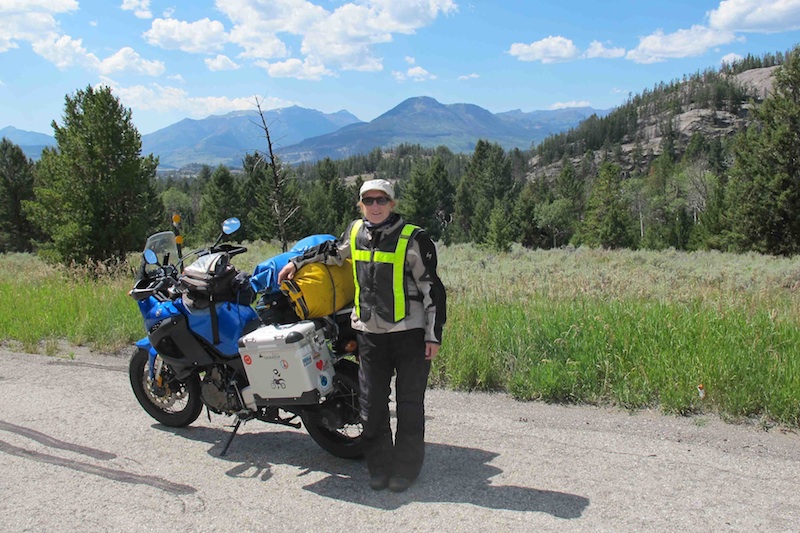
Four weeks into a solo six-week trip, I was traveling through Idaho researching a travel story. Some friendshad invited me to spend the weekend with them. Although much of the quarter-mile long gravel driveway to their mountain ridge home was hard packed, erosion ruts and several sharp turns added intrigue. As is often the case in corners on such roads, vehicles bank the gravel up against the outside edge, leaving only a thin layer of stones on the relatively smooth, hard surface of the inside of the turn. The corner I dreaded most wasn’t far from the top—a hairpin turn with loose gravel. Fully loaded with all of my camping gear, I’d made it to the top the day before with no problem, yet I was nervous about the descent.
Staging our riding sequence that morning, I took up the rear, knowing I needed to minimize distractions. I wanted no one behind me and lots of space between me and the next rider so I could see well ahead to use my eyes to steer and maintain balance. Taking a deep breath, I told myself I could do it, envisioned doing it, and started out. Recalling my off-road training, I stood on the foot-pegs, feathered the clutch and proceeded slowly. Intentionally and erroneously I shifted into second gear, thinking the engine would be less “torquey” and make my bike easier to manage. But my biggest mistake was failing to kick fear off the passenger seat. The result: I lurched off the driveway just after the hairpin turn and slid about 15 feet down a grassy slope where a barbed wire fence stopped my descent.
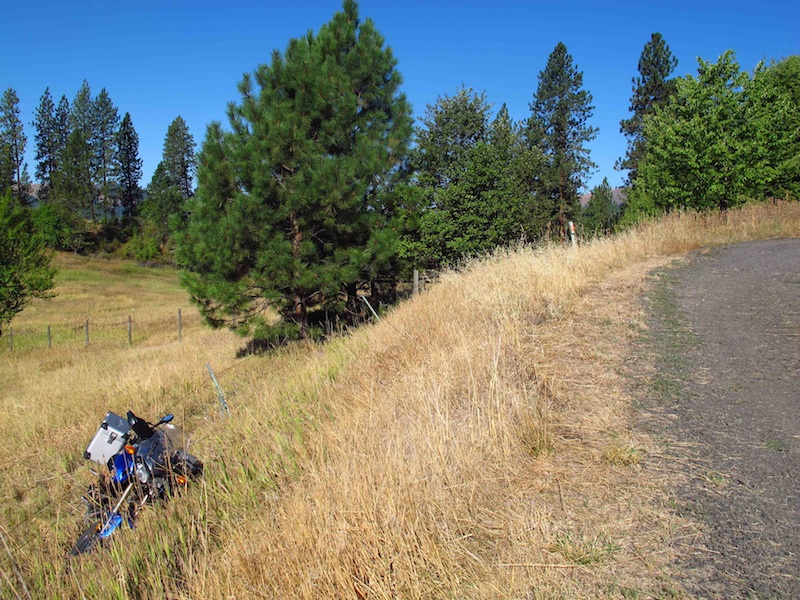
I looked at that deep loose gravel in the corner, which made me go wide and right into it. With the loss of traction, my back wheel started to fishtail, but knowing I could still salvage the corner and stay upright, I looked well ahead to my friends down the lane who had safely negotiated it, focusing my eyes where I wanted to go. I did almost everything right. Except further unnerved by the loss of traction, I glanced to my right and the edge of the driveway which took my front wheel over the edge—right where I was looking. You’ve heard the adage, “look where you want to go.” I unfortunately looked where I didn’t want to go, the edge of the driveway, but went there anyway.
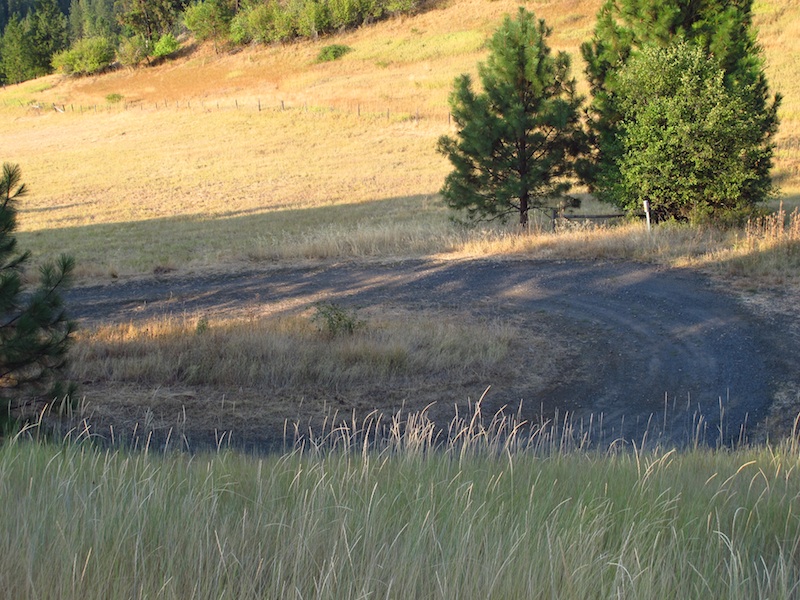 |
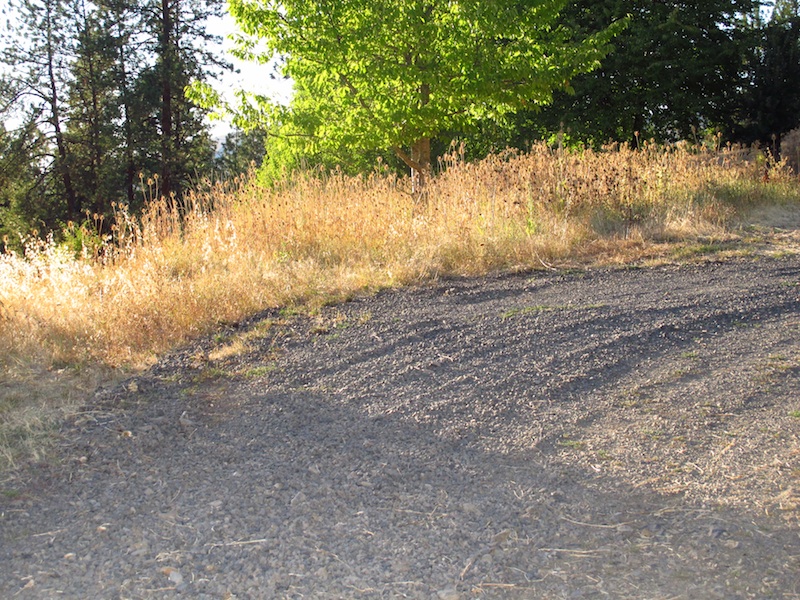 |
Knowing I was now out of control terrified me, but I was also angry with myself—realizing something so preventable could end up so badly. Fortunately, I walked away with only a few bruises, the biggest of which was on my ego. Since I was standing on the pegs, I could step free of the bike shortly after I felt us going over the edge. Muscle memory kicked right in—knowledge learned from my years as a motorcycle instructor—on how to handle a downed motorcycle. I instinctively shut off the kill switch, turned off the ignition, and then I removed my jacket, helmet and gloves. It took a few minutes for the others to realize what had happened and huff it up the hill to my rescue.
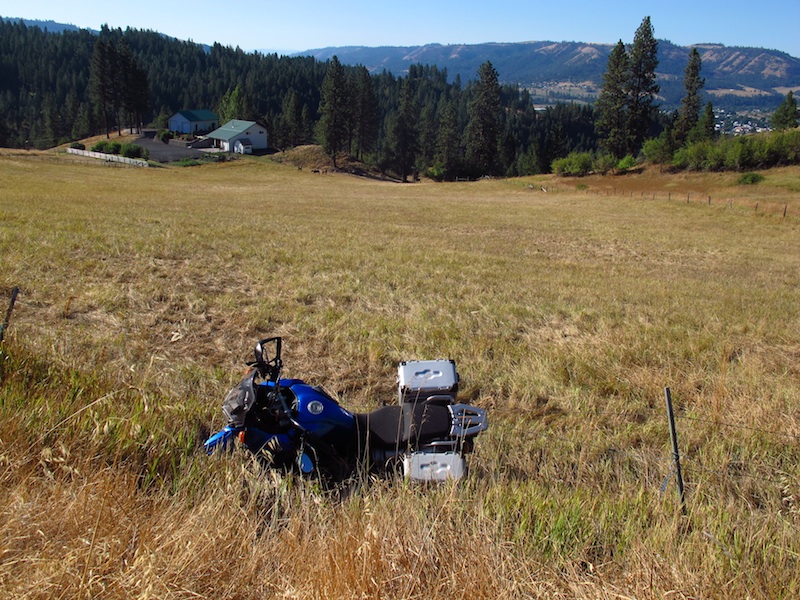 |
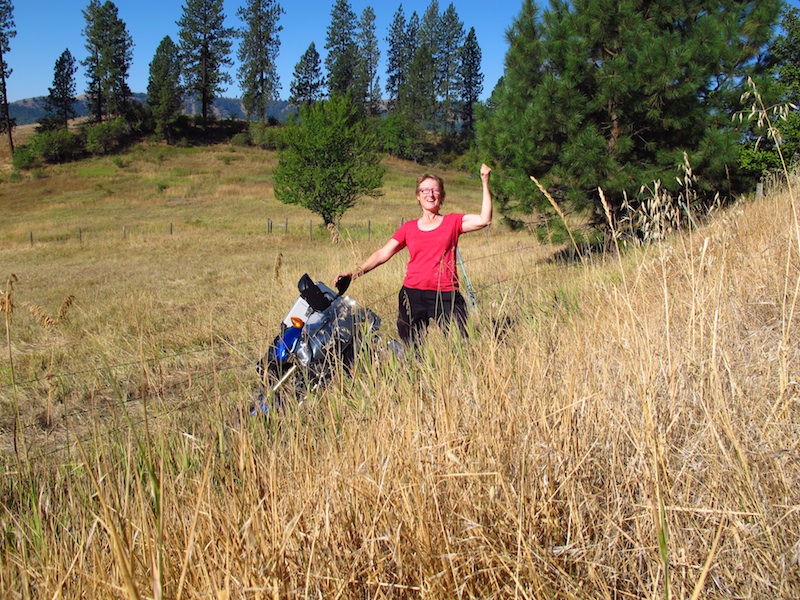 |
The owner of the mule-grazing field, in which I landed, observed my whole mishap and ran towards me. The mules on the other hand, were unimpressed and just kept grazing. After discovering I was OK, farmer Ron trekked back to his barn, and returned on his Kubota tractor with his wife following on their ATV. While she sought more help up the hill, Ron attached a towrope to my motorcycle’s frame. With more hands available to help now, the next step was to extricate the barbed wire fence from between the rear tire and fender.
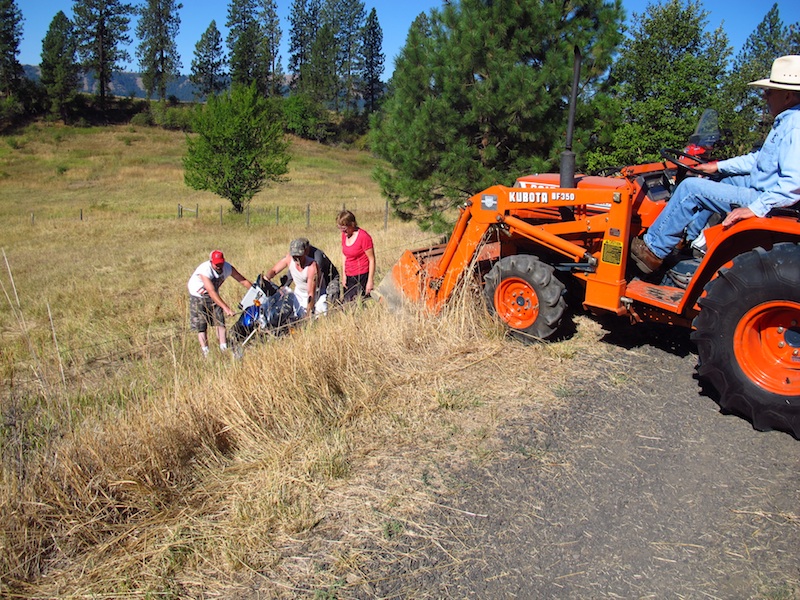 |
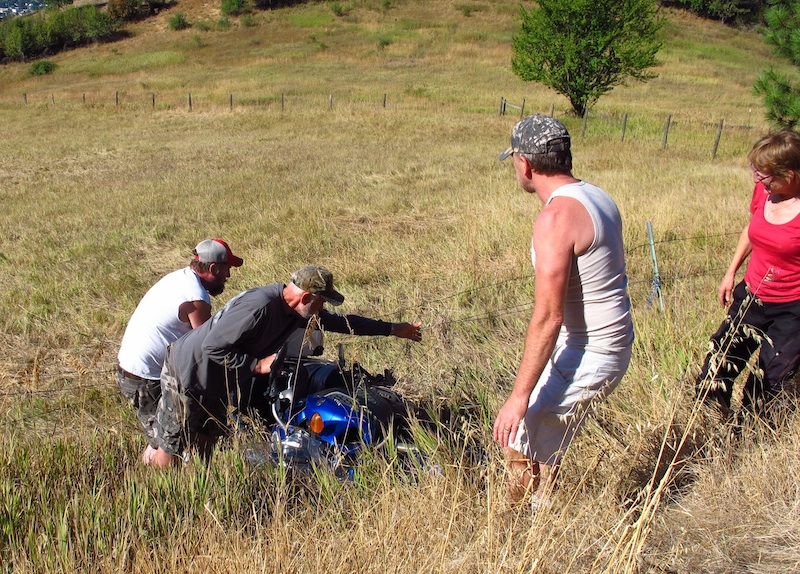 |
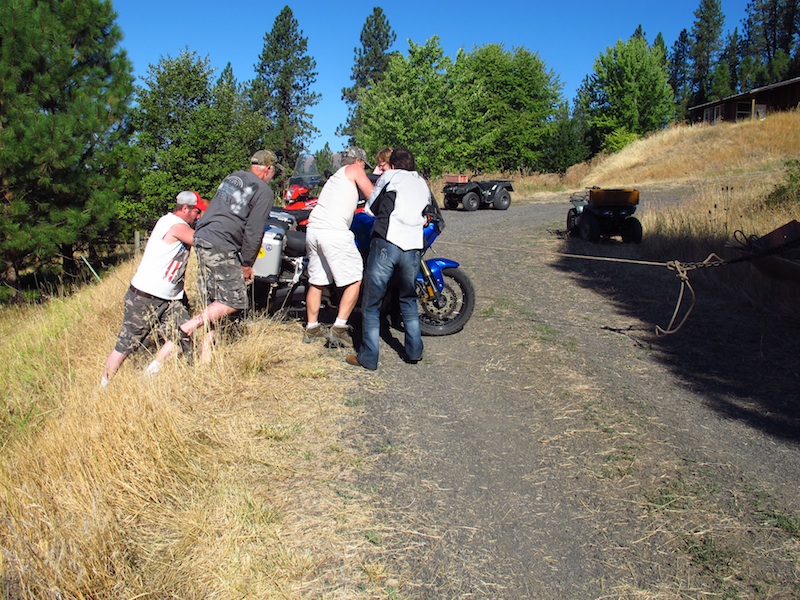 |
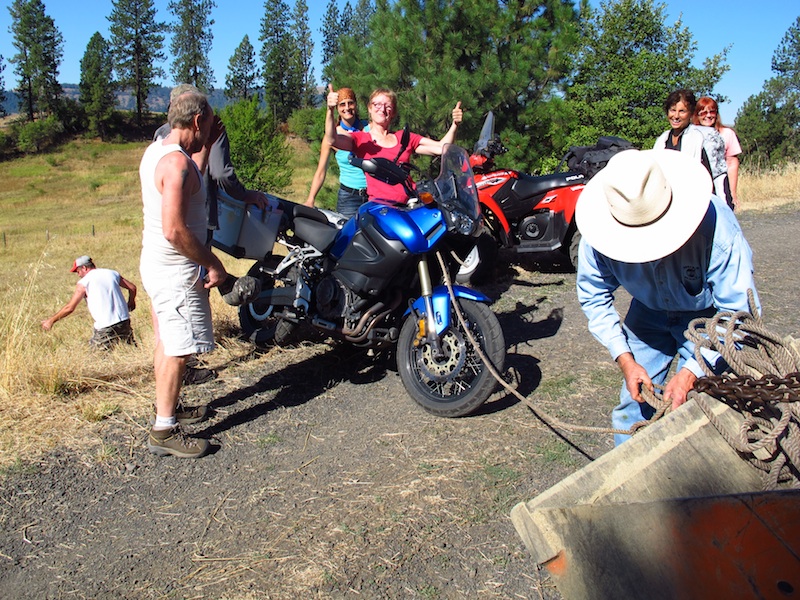 |
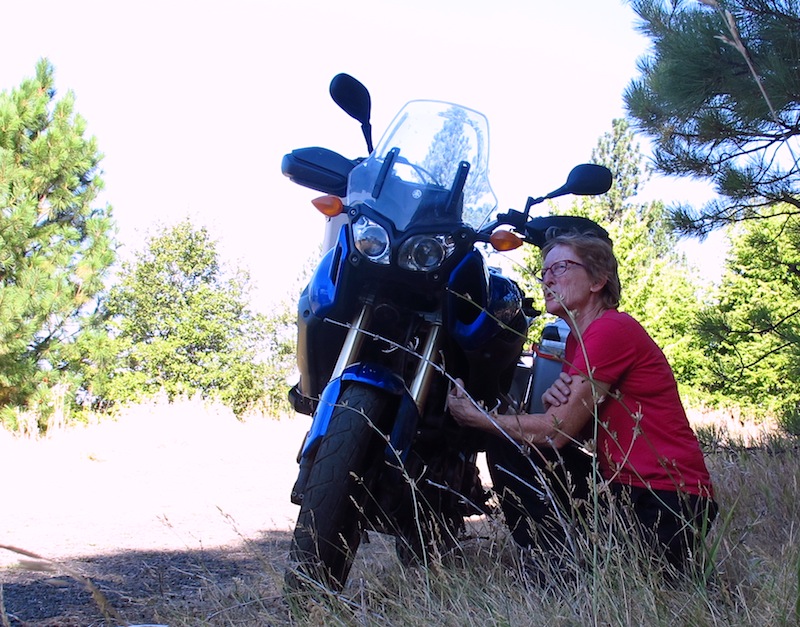 |
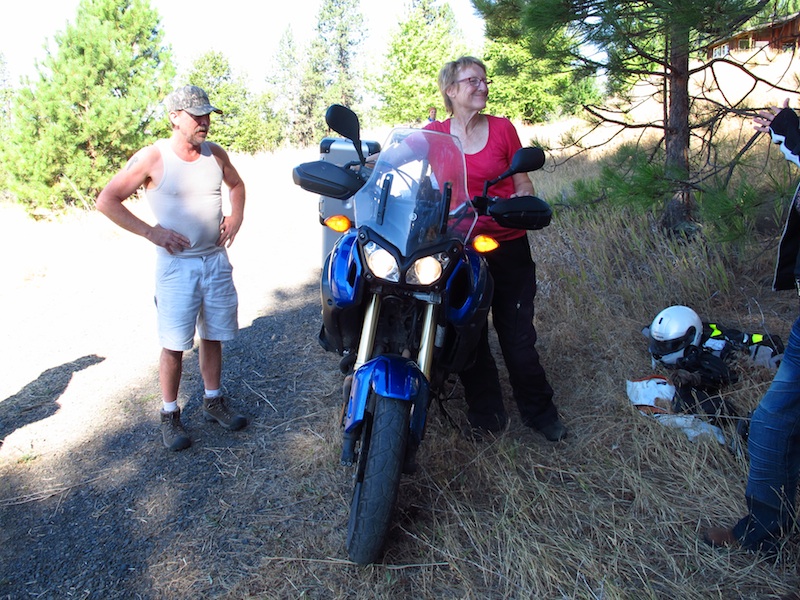 |
1. Road surface. “When we’re nervous or hesitant, we roll off on the throttle. That transfers our weight forward, to the contact patch of the front tire, causing the front wheel to dig in. That makes traveling through loose gravel or sand harder. What may have been better than being in second gear and lugging the bike on a descending gravel road with a steep slope beside it, would be to stay in first gear and feather the clutch. The torque is what we want on a downhill gravelly corner. Let the back wheel slow the bike down.”
He went on to describe how he would coach this during a training exercise. “I’d direct students to approach the corner from the outside and move in towards the left (assuming there is no oncoming traffic), to the apex of the left turn. That would have put your tire track more to the left and away from the slope on the right. Then, when standing, which lowers the center of gravity, lean heavily on your left foot. You can steer a motorcycle with your foot pegs, but only if you’re standing. Most of your weight should have been on the left peg. That also helps the bike bite the surface and turn to the left.”
2. Eyes. “If you look at the guardrail or off to the side of a corner, you’re going to go where you look. It’s never truer than in this situation, since your subconscious and psyche looked at that big drop off, and that’s where you ended. So, I’m thinking at some point, your eyes looked over there. You’ve got to put the blinders on and put your chin on your left shoulder when doing a left tight turn, so your eyes look far to the left. Imagine being in a car and looking through the driver’s side door window. It’s the same idea.”
I talked about the irrational fear that I had allowed to take control, and my general lack of confidence with U-turns. Here’s what Clinton prescribed:
“Left turns are easier than right so practice those first. On flat pavement in a parking lot, sit down, put the bike in first gear and go as slowly as you can, slipping the clutch. If you let the clutch out, it’s going to go at idle speed. That’s too fast in some instances. Move your wheels way over to the right, as close to the outside edge of the “road” as possible. Reposition your body so your butt is on the right (high) side of the motorcycle, enabling it to turn a lot sharper because you can lean it over. Put your chin on your left shoulder so you’re looking where you want to go, turn your handlebars and lean to the left.”
“If necessary, scrub off speed by controlling the power with the clutch, treating it like a dimmer rather than an on/off light switch. You may still need a little tap of rear brake every now and then to bring down your speed. That really brings your confidence up because you’re in control. If the clutch is out, or you’re in second gear lugging the bike through, the bike’s in control.”
I still wanted to figure out why a skilled rider, such as myself, made those mistakes that day. I figured out I was running on adrenaline, excited to ride with friends that day, though my body was actually physically exhausted. I’d been on the go for four weeks, riding long distances, camping most of the time, dealing with heat, altitude, forest fire smoke, wind and illness. That lowered my resistance and added to the propensity for fear and poor judgment.
Beyond practicing the physical technique, I recognized some life lessons in what had transpired:
1. The power of fear. No one is beyond the power that fear has to take up residence and undermine our confidence with false thoughts. There was no rational reason for me to go over the edge, yet the pictures proved it was me down there.
2. The touching power of community. So many people with different skills, most of whom I hadn’t known 24 hours before, pitched in and offered unconditional help. I remember my own farmer dad towing many stuck vehicles (never my motorcycle) out of predicaments with his Ford tractor. Now farmer Ron was helping me out with his Kubota.
3. The lesson of humility. The rider with the motorcycle most suited for this terrain (with a 70/30 rear tire) and the most riding experience, slid off the path, when three other riders on cruisers—far less suited for that driveway— managed to ride through smoothly. You can imagine the voices in my head telling me how foolish I looked after the incident. Given all my riding experience, additional training and work as an instructor, this should not have happened to me. Those were the same voices that ignited my fear in the first place. I will humbly—no boldly!—tell them to stand down in the future.
It’s said, that there are two plans for every day, our plans, and the Spirit’s plans for us. Sometimes they’re the same; often they’re not. Setting out on that ride, none of us knew that we’d be waylaid for an hour or so by life’s lessons. School was in session for everyone there, and while not everyone came away from that experience with the same lesson, it’s an event we’ll all remember.
Learn more about Liz Jansen on WRN’s Contributor page.


Great article and great advice. We were just talking about this, and how to get more women into the driver’s seat. So I shared it hoping it will reach a few people and maybe convince them to give it a try.
This is one of your best articles yet! Thank you. The breakdown of what should have been done was key to this being a great article. Please do more of these- this is what I did, but this is what I should have done, so we can all learn. This applies to any road situation when you find yourself on gravel in a turn. Thanks again.
I (so far!) haven’t had an accident on my motorcycle. I have always wondered, if it did happen, would I have the nerve to get back on it again. Great respect to you after this incident.
It’s quite ironic that I stumbled across your article while entering the Pinterest contest on Women Riders Now. The day before Easter I had my first spill on my bike, a 2012 Triumph Bonneville, while rounding a corner at about 35 to 40 mph. I hit a 35-foot-long pothole and once out of it, it shot me straight,however the road turned and I wound up in a ditch on the side of the road.I can only thank God that on that day I was in full gear due to the chill in the air which included my helmet, gloves, jeans, riding shoes and my brand new leather jacket (which the EMTs cut off of me because they didn’t want to move me). It was my first accident and first time in an ambulance. I am 44 and have been riding since I was 14. In 5 minutes I went through so many emotions, scared, cracking jokes, laughing, crying, and embarrassment. However, I learned from my accident and I can totally relate to yours. It’s nice to know you’re not alone, but more importantly that you lived through it. My bikes has some bumps and bruises along with my knees and a broken joint in my shoulder, but I’ll be alright. Thank you for sharing your story, I am right there with you! Happy and safe travels to you from one biker chick to another!
Such a great story. Totally relate. Feathering the clutch is a must in slow moving situations. As a beginner I have forgotten this as well.
Great article! Good outcome is directly related to training and experience.
Good article! Thank you for sharing! Glad you are OK.
Thank you for your thoughtful comments. This was not a proud moment but it was a a very important lesson. It sure got my attention and I’m glad it got yours. If it can prevent other such incidents, then it’s all worthwhile.
What an insightful and instructive article. Thank you. I find it ironic in an article about motorcycle safety that there is an ad for Daytona Bike Week showing a woman on a bike (presumably riding?) and not wearing a helmet.
Thank you for your comments, but we’ll assume that since the woman in the Daytona Bike Week ad is not wearing any protective gear, that she’s sitting on the motorcycle while it’s parked smiling for the camera. Nothing in that photo indicates she’s moving.
The incident itself was instructive but the fact that you took such time to consult, analyze and understand how it happened was even more instructive. Whenever I’ve had a bad moment, I really look hard at what mistake I made and try to consciously learn from the experience. Discussing with others is a good tip. Lemon aid from lemons! Very glad you were not hurt.
Thanks for this article, Liz, the tips, as well as the process and result! I’ve been riding more than 20 years. I currently ride a cruiser, and have encountered some rough gravel driveways and roads on my riding adventures. The only time I ever ditched was with a passenger pulling into a (paved) parking space (low speed), right in front of a coffee shop! All was fine, and there were helping hands. Your combination of humility, humor, and tips make your story so great and worth sharing. Thanks!
I really enjoy reading your article. I have been riding for 40 years. My theory on being a safe driver is you have to have a certain amount of fear when you ride. If you get to relaxed you get careless. Also, when I started riding in the 70s there was no one yakking on their cell phones. One has to be twice as careful when riding now.
Appreciate the comments and the kind words. It became a special experience for everyone involved. The barbed wire was unattached from the fencepost so we could untangle it from my bike. We then hooked it back up and tightened it before I even had my gear back on.
Liz,Thank you so much for a detailed and thoughtful account of your “training opportunity.” Great information about how to handle the situation. Confidence is gained with more information and that keeps the fear tamped down.
There was no mention of who mended the barbed wire fence that was cut. I hope that wasn’t just left up to the farmer. Don’t want to give bikers a bad name.
Thank you for sharing your experience. It is nice to know that someone with your experience sometimes experiences fear in certain situations also. It also makes me realize how important it is to let go of the fear.
Thanks for sharing! I’m glad to hear that even the best riders, do have an “oops” moment and that you got right back on and rode.
I really enjoyed this article and enjoy learning lessons from others. Just another reminder to remember the small things that keep you upright. I’m still a newbie, so reading articles like this make me realize mistakes happen. Just get back up and dust yourself off. I really liked reading the “lessons learned” with what happens when you do certain things with brakes, throttle, clutch, etc. Thank you for the story!